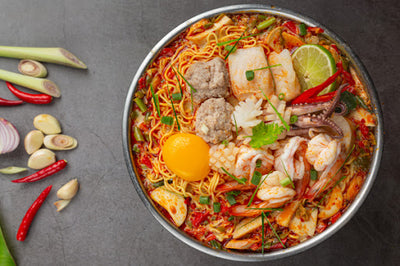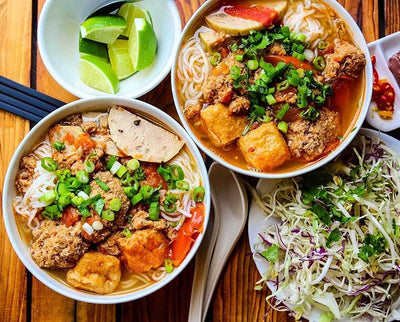Chè bưởi is a traditional Vietnamese dessert, notable for its refreshing, sweet and slightly bitter flavor due to the grapefruit peel. To prepare a delicious chè bưởi, it is essential to follow a precise and detailed recipe. Here is the recipe to prepare this refreshing Vietnamese dessert.

Vietnamese Chè Bưởi Recipe
Ingredients
For the grapefruit peel
- Grapefruit peel: 200g (choose a peel that is neither too thick nor too thin)
- Salt: 2 teaspoons
- Sugar: 100g
For the mung beans
- Shelled mung beans: 200g
- Water: 500ml
- For the coconut milk: Coconut milk: 200ml
- Sugar: 50g
- Salt: 1/4 teaspoon
For the tapioca flour
- Tapioca flour: 100g
- Water: 50ml
For cooking the cheese
- Sugar: 300g
- Water: 1.5 liters
- Pandanus leaves: 2-3 leaves (optional)
Preparation Steps
Step 1: Preparing the grapefruit peel
Wash the grapefruit peel carefully, remove the outer green part and keep only the white part.
Cut the bark into small cubes.
Soak grapefruit peel in diluted salt water, squeeze gently to extract bitterness. Rinse several times in clean water until bitterness disappears.
Step 2: Soaking and Cooking the Grapefruit Peel
Soak the grapefruit peel with 100g of sugar for about 1 hour.
Then cook the grapefruit peel in a saucepan for 5-7 minutes. When the peel becomes transparent and tender, remove it and let it drain.
Step 3: Preparing the Mung Beans
Soak mung beans in water for 2-3 hours to soften.
Steam the mung beans until tender.
Step 4: Preparing the Coconut Milk
Combine coconut milk, sugar and salt in a saucepan, heat gently, stirring until sugar dissolves. Set aside.
Step 5: Preparing the Tapioca Flour
Dissolve the tapioca flour in the water, stir until you get a smooth mixture without lumps.
Step 6: Cooking the Chè
Bring 1 liter of water to the boil with the pandanus leaves.
When the water boils, remove the pandan leaves, add the grapefruit peel and stir.
Add mung beans and sugar, stir.
When the mixture boils again, gradually add the tapioca flour, stirring constantly to avoid lumps. Cook until the chè thickens.
Step 7: Finalization and Tasting
Pour the chè into bowls, add coconut milk on top.
You can add crushed ice if you prefer to eat it cold.

Remarks
The process of pressing and rinsing the grapefruit peel is crucial to removing the bitterness, which allows the chè to have a more refreshing flavor.
When cooking chè, it is important to stir constantly to prevent lumps from forming, which gives the chè a smooth texture.
Coconut milk should be heated over low heat to prevent it from separating.
Chè bưởi is not only a delicious dessert, but also brings many health benefits thanks to its natural ingredients. Its refreshing, sweet and slightly oily flavor of coconut milk, combined with the crunch of grapefruit peel, makes it an unforgettable dessert. I hope that with this recipe, you can make this delicious chè bưởi for yourself and your family. Good luck!
Some Information about Vietnamese Chè Bưởi
Chè bưởi is a traditional and famous dessert of Vietnamese cuisine , appreciated for its refreshing, sweet and unique flavor. This dessert is attractive not only for its taste, but also for its meticulous and refined preparation, which demonstrates the culinary skill of the Vietnamese.
A perfect bowl of chè bưởi seamlessly combines the sweetness of sugar, the richness of coconut milk, the tenderness of mung beans, and the crunch of grapefruit peel. Visually, chè bưởi is often the pale yellow color of mung beans, punctuated with translucent pieces of grapefruit peel, with a layer of creamy white coconut milk on top, creating an enticing and delicious work of culinary art.
The uniqueness of chè bưởi lies in the grapefruit peel – the main ingredient of the dessert. The grapefruit peel is carefully processed to remove any bitterness, while retaining its crisp texture and delicate fragrance. Through several steps of soaking, cooking and rinsing, the grapefruit peel becomes translucent, crisp and infused with the flavor of sugar and tapioca flour, providing a unique mouthfeel.
The mung beans in chè bưởi are steamed until tender, blending perfectly with the grapefruit peel to balance the flavors. Not only do the mung beans add a creamy, chewy texture, they also provide nutrients, enriching the dessert.
The sugar syrup is slightly sweet, without being too intense, and is cooked with pandan leaves, providing a sweet and pleasant aroma. When served, a layer of coconut milk is often added on top, adding a touch of richness and creaminess, which further enriches the flavor of the chè. The coconut milk also softens the sweetness of the sugar, providing a feeling of freshness and lightness.
Chè bưởi can be enjoyed hot or cold, depending on individual preferences. When eaten cold, the dessert becomes refreshing, soothing the summer heat. Conversely, when eaten hot, chè bưởi brings a comforting warm feeling, ideal for cool days.
Chè bưởi is not only a delicious dessert, but also contains cultural and traditional values of Vietnamese people. This dessert often appears during festivals, Têt Nguyên Đán, or simply during family and friends gatherings. Each bowl of chè bưởi is not only a dessert, but also a part of memories, a connection between generations, between the past and the present.
In summary, chè bưởi is a distinctive dish of Vietnamese cuisine , with unique flavor, exquisite preparation and deep cultural significance. Each bowl of chè bưởi is not only a work of culinary art, but also a bond of love and sharing in life.




